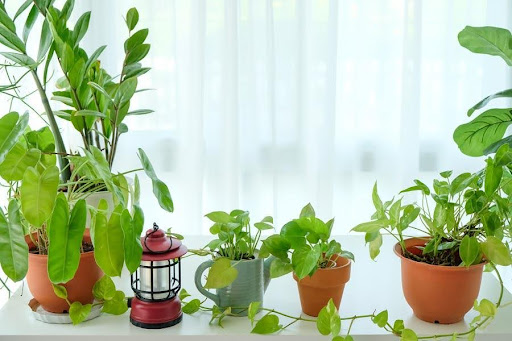Being a plant parent and keeping your green lot alive and thriving throughout the year is not an easy task, especially when weather changes come into play. You might think that this is only an issue when you tend to outdoor plants, but the transition of seasons also impacts house plants, albeit in a more subtle way, since they are not directly exposed to the elements.
This means that the requirements of your indoor garden also change, and you have to adapt your care routine accordingly. Even as a natural-born green thumb, you can still have trouble navigating these changes and caring for your greenery as the mercury drops and the days shorten. That’s why so many plants wither during the cold, dark months of the year and never get to see the next spring.
With winter already knocking at the door, you better start preparing if you don’t want to bid goodbye to your greens. So, here’s what you need to do to ensure your houseplants survive the winter unscathed.
Water less
Each plant has unique watering needs based on its individual characteristics and climate conditions, but as a general rule of thumb, they require less water in winter since they don’t receive as much sunlight as they do in spring or summer and experience slower growth. So, if you’ve ignored this aspect in the past and maintained the same watering schedule as usual, this might be one of the reasons your plants haven’t been doing so well in wintertime.
It’s therefore important to reduce watering frequency for indoor plants to prevent water accumulation that could cause their roots to rot. Since there’s no one-size-fits-all approach in this respect, the best thing to do is to wait for the soil to dry out before the next watering.
The good news is you can go on a short holiday without worrying that your plants are going to miss you and die of thirst. As long as you water them thoroughly before you leave and maybe move them to a less sunny area of your house, they should be fine for a few days without the assistance of a plant sitter.
Increase sunlight exposure
Plants need sunlight for photosynthesis so the reduction of light in winter as the days grow shorter and darker can be quite a shock to their system. You might start noticing symptoms like wrinkled leaves, discolouration, root degradation or etiolation – when plants grow thin, tall and pale – due to lack of sunlight.
As usual, not all indoor plants will react the same way to changing light conditions. Some will adjust after a while and continue their development as normal, while others might not be able to make it if you don’t intervene and change their location. Move planters holding sun-loving greens to a place that allows them to soak up enough light, preferably closer to a window sill, and rotate them regularly to ensure even growth.
Don’t panic at the first fallen leaf
Even with proper care and attention, some indoor plants might still lose a few leaves during the change of seasons. That’s a perfectly normal response to daylight reduction and you shouldn’t lose sleep over it unless there are other signs indicating there might be something more serious going on.
If one of your green friends is rapidly losing all of its leaves and remains completely barren, that’s when you should worry and look into potential causes. Overwatering, nutrient deficiency, and pests are some of the common culprits that might be to blame for it.
Ensure a constant temperature
Indoor plants don’t take well to sudden shifts in temperature, which are sometimes inevitable during winter, with radiators, cold drafts, hot air vents disrupting their usual living environment.
Do your best to maintain a constant temperature in your house and avoid exposing your greenery to extremes. Keep pots away from open windows and doors, be mindful of where you place radiators and other sources of heat, and set the temperature to a level that is comfortable for you and your house plants.
Let plants rest
Winter is a time of dormancy for plants, when the extended periods of darkness and lower temperatures cause their growth rate to slow down significantly or even stop altogether for certain species. This allows them to conserve their energy until milder weather returns and they can resume their development.
Since there won’t be much growing taking place, you should give your plants a break and put the fertilizers and nutrients away for the next months till spring comes around. You should also refrain from repotting since this is best done when plants are in an active growth stage. So, if you’ve purchased some new pots from elho and you’re eager to transfer your plants, keep them on stand-by and hold back your enthusiasm for a little bit longer if you don’t want to disrupt their equilibrium.
Increase humidity levels
When you turn the heat up inside the house, the air becomes drier, and your plants might suffer because of it. This particularly affects tropical plants such as ferns, orchids, and peace lilies since they originate from tropical climates and, therefore, thrive in environments with higher humidity levels. You can use a humidifier to ensure optimum conditions, place them on trays with pebbles and water, or group houseplants together to maintain a more humid atmosphere around them. It’s also recommended to clean the leaves from dust and grime regularly with a damp cloth or give plants a quick shower so they can make the most of the limited sunlight they receive.
Winter can be a trying time for your house plants and for you as their caretaker, but with a bit of research and patience, and your unwavering love and care, you can ensure they remain strong and healthy, come rain or shine.

